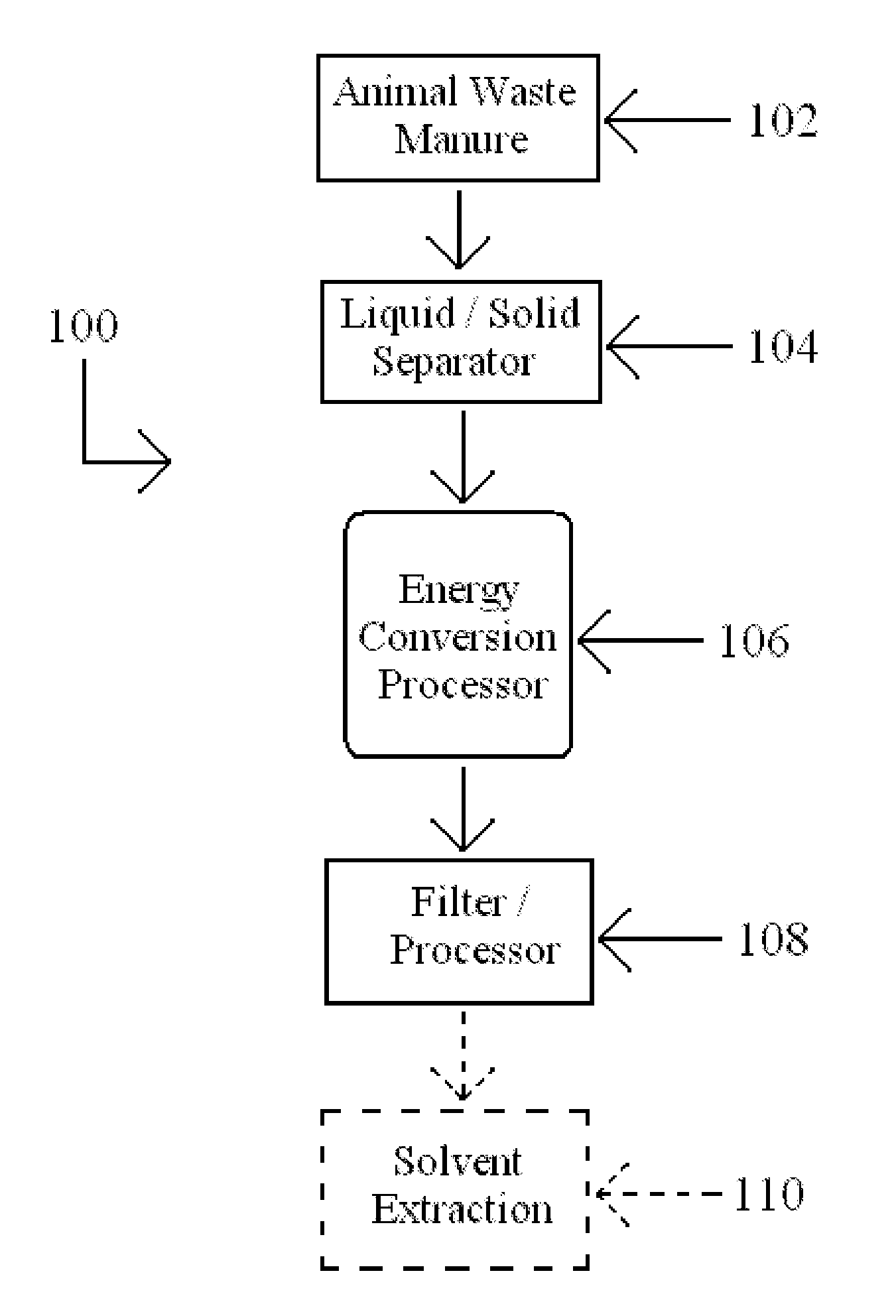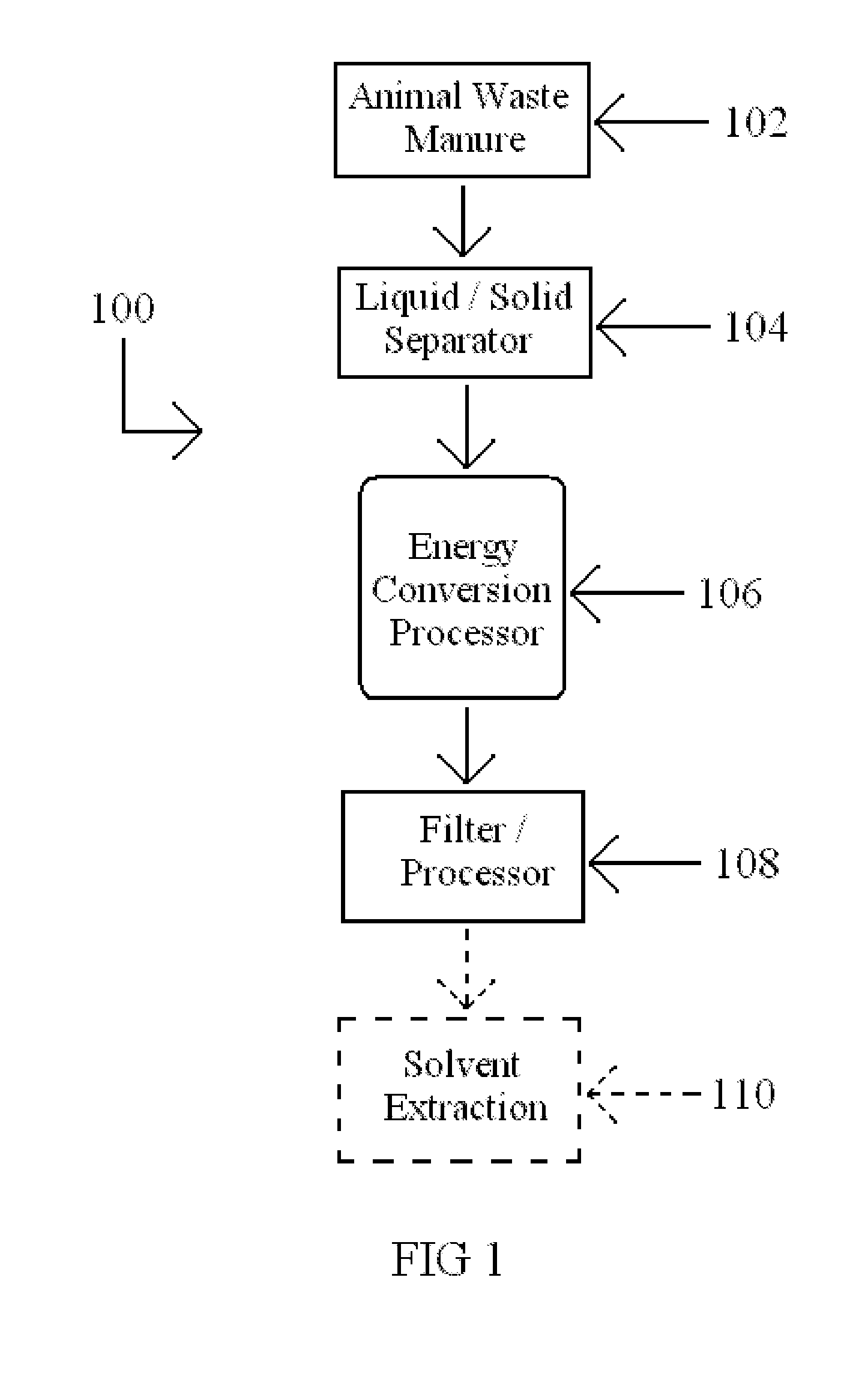Asphalt compositions with resinous addition derived from animal waste
a technology of animal waste and asphalt composition, applied in the direction of fatty acid chemical modification, application, inks, etc., can solve the problems of animal waste disposal becoming a very important issue, contaminating surface water, and affecting the chemical compatibility of asphalt composition, so as to improve the chemical compatibility
- Summary
- Abstract
- Description
- Claims
- Application Information
AI Technical Summary
Benefits of technology
Problems solved by technology
Method used
Image
Examples
example 1
[0075]90 grams (90 parts) of asphalt with a performance grading of 64-28 was added to a stainless steel beaker and heated to a temperature of 325° F. under mild stirring. To this was added 10 grams (10 parts) of bio-oil (Innoventor, St. Louis, Mo.) followed by further mixing for 30 minutes while maintaining a temperature of 350° F. This formed a control for comparison against asphalt compositions including compatibilizing agents for the bio-oil as in accordance with this invention. For comparison, a first formulation was formed according to the same formulation of asphalt (90 parts) and bio-oil (10 parts) but with the inclusion of 1 part hydrogenated tallow amine (HTA) (i.e., compatibilizing agent), the compatibilizing agent being added at the same time as the addition of the bio-oil. For additional comparison, a second test formulation was formed according to the same formulation of asphalt (90 parts) and bio-oil (10 parts) but with 1 part hydrogenated tallow amine (compatibilizing...
example 2
[0077]250 grams of 70 / 30 asphalt cutback in odorless mineral spirits is preheated to 140° F. and placed into a 2-liter stainless steel mixing bowl from a Hobart planetary gear mixer. To this is added 5 grams of hydrogenated tallow amine (Noram SH, CECA, SA) while stirring at setting #2 for 5 minutes. To this is added 25 grams of bio-oil while maintaining original temperature. When the bio-oil is completely dispersed, 3.75 grams of OPA-10 Acetate surfactant (Momentum Technologies, Inc.), a clay gel activator (noting that it may also serve as a compatibilizing agent along with HTA), is added followed by an additional 5 minutes of mixing. To this is added 30 grams of Attagel 36 (BASF Corporation) followed by 10 minutes of mixing during which time a thixotropic gel structure will have formed. To this is added 15 grams of cellulose fibers (J.R. Rettenmaier, Gel-Cell 10) with continued mixing at a setting of #1 for 5 minutes. To this is added 30 grams of finely ground calcium carbonate fo...
example 3
[0078]250 grams of 70 / 30 asphalt cutback in odorless mineral spirits is preheated to 140° F. and placed into a 2-liter stainless steel mixing bowl from a Hobart planetary gear mixer. To this is added 5 grams of Noram SH (HTA, compatibilizing agent) while stirring at setting #2 for 5 minutes. To this is added 25 grams of bio-oil while maintaining original temperature. When the bio-oil is completely dispersed 5 grams of OPA-10 Acetate is added followed by 5 minutes of mixing. To this is added 20 grams of Attagel 36 followed by about 10 minutes of mixing at setting #2. To this is added 40 grams of finely ground calcium carbonate followed by an additional 5 minutes of mixing. The resultant composition is an example of an asphalt roof coating adhesive.
PUM
| Property | Measurement | Unit |
|---|---|---|
| temperature | aaaaa | aaaaa |
| pressure | aaaaa | aaaaa |
| temperature | aaaaa | aaaaa |
Abstract
Description
Claims
Application Information
 Login to View More
Login to View More - R&D
- Intellectual Property
- Life Sciences
- Materials
- Tech Scout
- Unparalleled Data Quality
- Higher Quality Content
- 60% Fewer Hallucinations
Browse by: Latest US Patents, China's latest patents, Technical Efficacy Thesaurus, Application Domain, Technology Topic, Popular Technical Reports.
© 2025 PatSnap. All rights reserved.Legal|Privacy policy|Modern Slavery Act Transparency Statement|Sitemap|About US| Contact US: help@patsnap.com


